Every dog owner knows the joy of seeing their furry friend bounding around, full of energy. So, when you notice your dog limping, it can be a cause for concern. Limping in dogs can be indicative of various underlying issues, ranging from minor injuries to more serious health conditions. Understanding the causes, symptoms, and treatments for dog limping is crucial for providing the best care and ensuring your pet’s well-being.
Contents Overview
What is Dog Limping
Dog limping refers to an abnormality in a dog’s gait or movement pattern, characterized by difficulty or discomfort when walking or bearing weight on one or more limbs. Limping in dogs can manifest as a visible favoring of one limb, alterations in gait, stiffness, or reluctance to engage in physical activity. It is often indicative of underlying issues such as injuries, arthritis, infections, developmental disorders, or neurological conditions. Recognizing and addressing dog limping promptly is essential for providing appropriate care and ensuring the well-being of the animal.
Causes of Dog Limping
The causes of dog limping are diverse and can stem from various underlying factors, ranging from minor injuries to serious health conditions. Understanding these causes is crucial for accurately diagnosing and treating the underlying issue. Here are the most common causes of dog limping explained in detail:
- Injuries:
- Strains and Sprains: Dogs can experience strains or sprains in their muscles, tendons, or ligaments due to sudden movements, overexertion, or trauma. Common examples include sprained ankles or strained muscles from jumping or running.
- Fractures: Broken bones, such as fractures in the limbs, can result from accidents, falls, or excessive force. Fractures may be simple or compound, with varying degrees of severity.
- Wounds: Cuts, lacerations, or puncture wounds can occur from sharp objects or animal bites. These wounds may lead to limping if they affect the mobility or stability of the affected limb.
- Arthritis:
- Osteoarthritis: Also known as degenerative joint disease, osteoarthritis is a common cause of chronic pain and stiffness in dogs, particularly in older individuals. It involves the gradual breakdown of cartilage in the joints, leading to inflammation, discomfort, and impaired mobility.
- Rheumatoid Arthritis: Less common than osteoarthritis, rheumatoid arthritis is an autoimmune disorder that causes inflammation and damage to the joints, resulting in pain and difficulty walking.
- Infections:
- Bacterial Infections: Bacterial infections, such as osteomyelitis (bone infection) or septic arthritis (joint infection), can lead to limping and localized pain.
- Viral Infections: Viruses like canine distemper or canine parvovirus may cause musculoskeletal symptoms, including limping, as part of their clinical presentation.
- Fungal Infections: Certain fungal pathogens, such as Blastomyces or Cryptococcus, can infect bones or joints, leading to lameness and discomfort.
- Developmental Disorders:
- Hip Dysplasia: A common orthopedic condition in dogs, hip dysplasia involves abnormal development of the hip joint, leading to instability, pain, and limping.
- Elbow Dysplasia: Elbow dysplasia encompasses various developmental abnormalities affecting the elbow joint, resulting in lameness, joint pain, and difficulty walking.
- Neurological Issues:
- Nerve Damage: Trauma, compression, or disease affecting the nerves can result in neuropathic pain or motor deficits, leading to gait abnormalities and limping.
- Spinal Cord Disorders: Conditions like intervertebral disc disease (IVDD) or spinal cord tumors can cause compression or damage to the spinal cord, resulting in weakness, paralysis, and altered gait.
- Cancer:
- Bone Cancer (Osteosarcoma): Osteosarcoma is a malignant bone tumor that commonly affects the limbs of large and giant breeds. It can cause progressive lameness, swelling, and pain in the affected limb.
- Soft Tissue Sarcomas: Sarcomas originating from soft tissues, such as muscles or connective tissues, can also lead to limping if they impinge on nerves or interfere with limb function.
- Other Causes:
- Patellar Luxation: Patellar luxation occurs when the kneecap (patella) dislocates or moves out of its normal position, causing intermittent lameness and discomfort.
- Tick-borne Diseases: Tick-borne illnesses like Lyme disease or ehrlichiosis can cause joint pain, inflammation, and lameness as part of their clinical manifestations.
Symptoms of Dog Limping
Recognizing the symptoms of dog limping is essential for pet owners to identify potential issues and seek appropriate veterinary care. While limping itself is a clear indicator of discomfort or difficulty in walking, there are several associated symptoms and signs that can provide valuable insights into the underlying cause. Here’s a comprehensive overview of the symptoms of dog limping:
- Limping or Favoring One Limb:
- Dogs may visibly favor one limb over others, either by putting less weight on it or avoiding using it altogether.
- The limp may be intermittent or persistent, depending on the cause and severity of the underlying condition.
- Altered Gait:
- Changes in the dog’s walking or running pattern may accompany limping, such as a noticeable limp, stiffness, or lameness.
- Dogs may exhibit an abnormal stride, reluctance to bear weight on certain limbs, or a shortened or uneven gait.
- Visible Signs of Discomfort:
- Dogs experiencing limping may display signs of discomfort or pain, such as whimpering, whining, or vocalization when walking or moving.
- They may also exhibit restlessness, panting, or other behaviors indicative of distress.
- Swelling or Inflammation:
- Examination of the affected limb or joint may reveal signs of swelling, inflammation, or heat, indicating a localized response to injury or inflammation.
- Swelling may be subtle or pronounced, depending on the underlying cause and duration of the condition.
- Reduced Mobility:
- Dogs with limping may demonstrate decreased mobility or reluctance to engage in physical activities they once enjoyed, such as running, jumping, or climbing stairs.
- They may appear lethargic, reluctant to move, or hesitant to put weight on the affected limb.
- Change in Behavior:
- Limping can affect a dog’s behavior and demeanor, leading to changes in appetite, sleep patterns, or interaction with family members.
- Dogs may become more withdrawn, irritable, or less interested in social interactions due to discomfort or pain.
- Guarding or Protecting the Limb:
- Dogs may instinctively guard or protect the affected limb by holding it off the ground, tucking it close to the body, or avoiding movements that exacerbate pain.
- They may exhibit signs of sensitivity or defensive behavior when the affected limb is touched or manipulated.
- Joint Stiffness or Rigidity:
- Dogs with arthritis or joint-related conditions may experience stiffness or rigidity in the affected joints, especially after periods of rest or inactivity.
- Joint stiffness may improve with movement but worsen with prolonged activity or exertion.
- Visible Trauma or Injury:
- In cases of traumatic injury or wounds, dogs may exhibit visible signs of injury, such as cuts, abrasions, bruises, or bleeding, in addition to limping.
- Examination of the affected area may reveal evidence of trauma, foreign objects, or tissue damage.
- Progressive Worsening of Symptoms:
- Some causes of limping, such as degenerative joint disease or progressive conditions like cancer, may lead to a gradual worsening of symptoms over time.
- Dogs may initially exhibit mild limping or discomfort that progressively worsens without intervention.
Treatment Options for Dog Limping
Treatment options for dog limping vary depending on the underlying cause, severity of the condition, and individual patient factors. The goal of treatment is to alleviate pain, promote healing, and improve the dog’s mobility and quality of life. Here’s a comprehensive overview of the various treatment options available for dog limping:
- Rest and Restricted Activity:
- For mild injuries or acute flare-ups of chronic conditions, rest and restricted activity may be prescribed to allow the affected limb time to heal.
- Limiting strenuous exercise, jumping, or rough play can prevent further injury and promote recovery.
- Medication:
- Pain relievers: Nonsteroidal anti-inflammatory drugs (NSAIDs) such as carprofen, meloxicam, or deracoxib may be prescribed to alleviate pain and reduce inflammation associated with conditions like arthritis or soft tissue injuries.
- Joint supplements: Nutraceuticals containing glucosamine, chondroitin sulfate, omega-3 fatty acids, and other joint-supporting ingredients may help improve joint health and reduce symptoms of arthritis.
- Antibiotics: In cases of bacterial infections or wounds, antibiotics may be prescribed to treat the underlying infection and prevent complications.
- Physical Therapy and Rehabilitation:
- Rehabilitation exercises: Targeted exercises and stretching routines prescribed by a veterinary rehabilitation therapist can help improve muscle strength, joint flexibility, and range of motion.
- Hydrotherapy: Swimming or underwater treadmill exercises can provide low-impact conditioning and promote muscle strengthening without placing excessive stress on joints.
- Massage therapy: Massage techniques can help reduce muscle tension, improve circulation, and alleviate pain and stiffness associated with limping.
- Surgery:
- In cases of severe injuries, developmental abnormalities, or advanced joint disease, surgical intervention may be necessary to repair damaged tissues, stabilize joints, or correct structural abnormalities.
- Surgical procedures may include fracture repair, ligament reconstruction, joint stabilization (such as TPLO or TTA for cruciate ligament injuries), or joint replacement (such as total hip replacement or elbow replacement).
- Weight Management:
- Maintaining a healthy weight is crucial for reducing stress on joints and minimizing the progression of conditions like arthritis.
- A balanced diet and portion control, along with regular exercise, can help manage weight and prevent obesity-related health issues.
- Orthotics and Assistive Devices:
- Orthopedic braces, splints, or supportive wraps may be used to provide stability and support to injured limbs or joints during the healing process.
- Assistive devices such as mobility carts or harnesses can help dogs with mobility impairments maintain their independence and quality of life.
- Alternative Therapies:
- Acupuncture: Traditional Chinese acupuncture techniques can help alleviate pain, reduce inflammation, and promote healing by stimulating specific acupoints.
- Laser therapy: Low-level laser therapy (LLLT) or cold laser therapy can accelerate tissue repair, reduce pain and inflammation, and improve circulation in affected areas.
- Chiropractic care: Veterinary chiropractors use manual adjustments to correct spinal misalignments and improve nerve function, which may benefit dogs with musculoskeletal issues contributing to limping.
- Complementary Treatments:
- Herbal supplements: Certain herbal remedies, such as turmeric, boswellia, or devil’s claw, may have anti-inflammatory properties and provide additional support for joint health.
- Homeopathic remedies: Homeopathy uses highly diluted substances to stimulate the body’s natural healing mechanisms and may be used adjunctively with conventional treatment modalities.
- Lifestyle Modifications:
- Environmental adaptations: Making modifications to the home environment, such as providing ramps or stairs for easy access, can help accommodate mobility-impaired dogs and prevent further injury.
- Regular veterinary check-ups: Scheduled follow-up appointments with a veterinarian are essential for monitoring the dog’s progress, adjusting treatment plans as needed, and addressing any new concerns or complications.
Preventing Dog Limping
Preventing dog limping involves proactive measures to minimize the risk of injuries, manage underlying health conditions, and promote overall musculoskeletal health. By addressing potential risk factors and implementing preventive strategies, pet owners can help maintain their dog’s mobility, comfort, and well-being. Here are several key steps to prevent dog limping:
- Regular Exercise and Physical Activity:
- Provide regular, moderate exercise tailored to your dog’s age, breed, size, and fitness level. Engaging in activities such as walking, running, playing fetch, or agility training can help strengthen muscles, improve joint flexibility, and maintain overall fitness.
- Avoid overexertion, especially in puppies or senior dogs, and gradually increase the intensity and duration of exercise to prevent strain or injury.
- Proper Nutrition and Weight Management:
- Feed a balanced diet formulated to meet your dog’s nutritional needs and support musculoskeletal health. Consult with your veterinarian to determine the appropriate type and amount of food for your dog’s age, size, and activity level.
- Maintain a healthy weight through portion control, regular exercise, and monitoring calorie intake. Obesity increases the risk of musculoskeletal problems and exacerbates conditions like arthritis.
- Regular Veterinary Check-ups and Preventive Care:
- Schedule routine veterinary examinations at least once or twice a year, depending on your dog’s age and health status. Regular check-ups allow for early detection and management of underlying health issues that could contribute to limping.
- Stay up-to-date on vaccinations, parasite control, and preventive medications to protect against infectious diseases and tick-borne illnesses that may affect joint health.
- Joint Health Supplements and Nutraceuticals:
- Consider incorporating joint supplements containing ingredients like glucosamine, chondroitin sulfate, MSM, and omega-3 fatty acids into your dog’s diet. These supplements can support cartilage health, reduce inflammation, and improve joint function.
- Consult with your veterinarian to determine the appropriate dosage and formulation based on your dog’s individual needs and any existing health conditions.
- Environmental Safety and Injury Prevention:
- Create a safe indoor and outdoor environment free of hazards that could cause slips, falls, or traumatic injuries. Remove obstacles, secure loose rugs or carpets, and provide adequate lighting to minimize the risk of accidents.
- Use safety measures such as gates, fences, or leash restraints to prevent your dog from wandering into dangerous areas or encountering potential hazards like traffic, wildlife, or toxic substances.
- Proper Warm-up and Cool-down:
- Before engaging in strenuous physical activity or exercise, ensure your dog has a proper warm-up period to prepare muscles, joints, and ligaments for increased activity. Start with gentle movements, stretching, and walking before progressing to more intense activities.
- After exercise, allow time for a gradual cool-down period to prevent muscle stiffness and reduce the risk of injury. Encourage gentle stretching, massage, and relaxation to promote recovery and muscle recovery.
- Avoid Overexertion and High-Impact Activities:
- Be mindful of your dog’s physical limitations and avoid activities that may put excessive strain on joints or increase the risk of injury. Limit jumping from heights, repetitive high-impact activities, and rough play that could lead to sprains, strains, or fractures.
- Provide alternative forms of exercise, such as swimming or low-impact games, to reduce stress on joints while still promoting physical fitness and mental stimulation.
- Early Intervention and Veterinary Care:
- Monitor your dog’s mobility, behavior, and overall health closely for any signs of limping or discomfort. Promptly seek veterinary attention if you notice limping, changes in gait, or other concerning symptoms.
- Follow your veterinarian’s recommendations for diagnostic testing, treatment, and management of any underlying health conditions to prevent progression and minimize the risk of complications.
Bottom Line
Dog limping can be a distressing sight for any pet owner, but understanding the causes, symptoms, and treatment options can help you provide the best care for your furry companion. From minor injuries to chronic conditions like arthritis, prompt attention and appropriate treatment are key to ensuring your dog’s comfort and well-being. By being proactive in preventive care and attentive to any signs of limping, you can help your dog lead a happy, active life free from discomfort and pain.



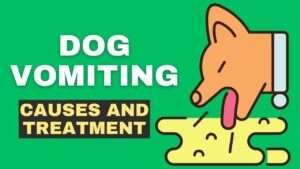
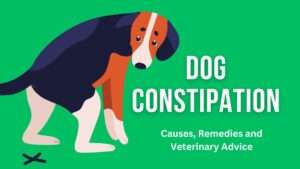

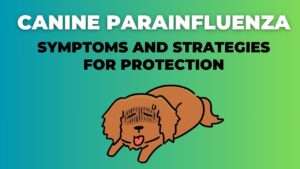










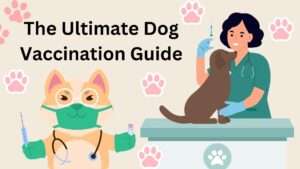

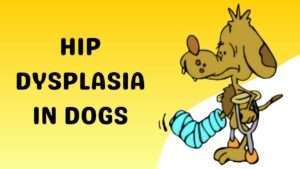





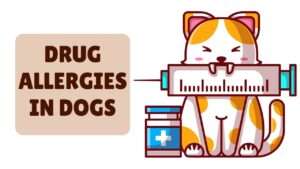
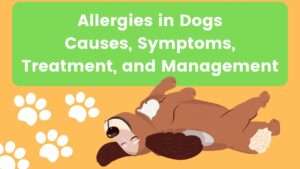
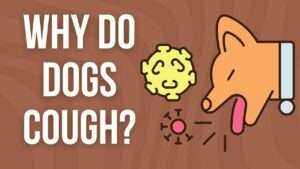







+ There are no comments
Add yours